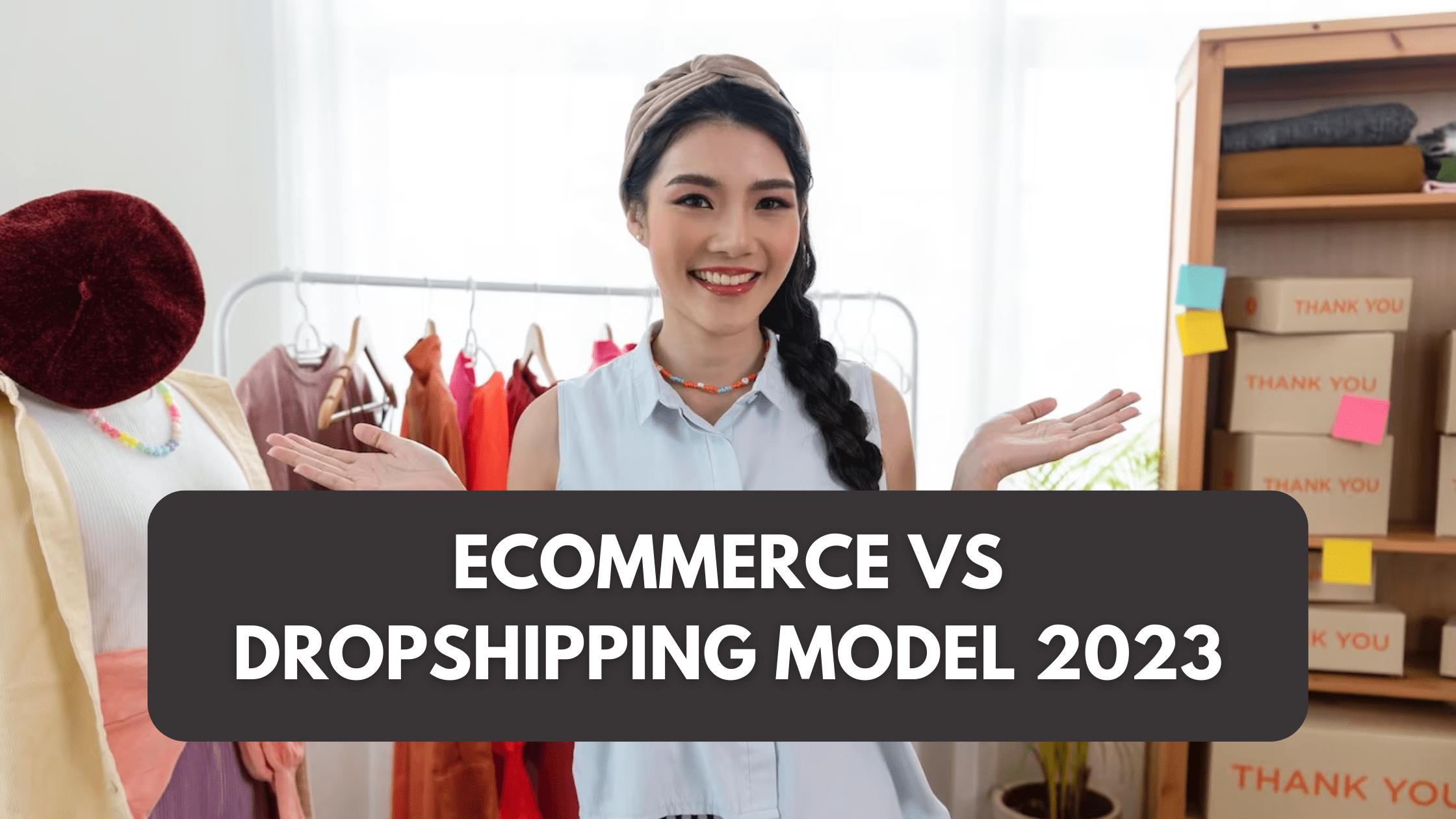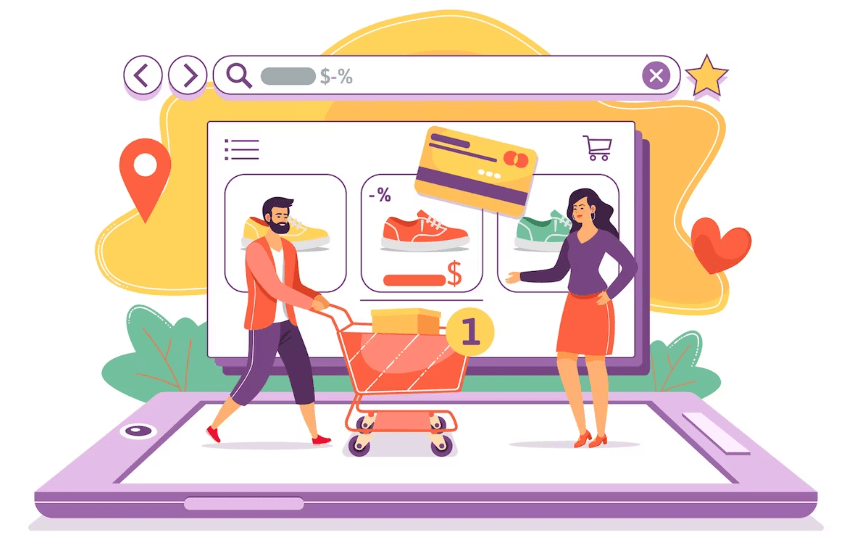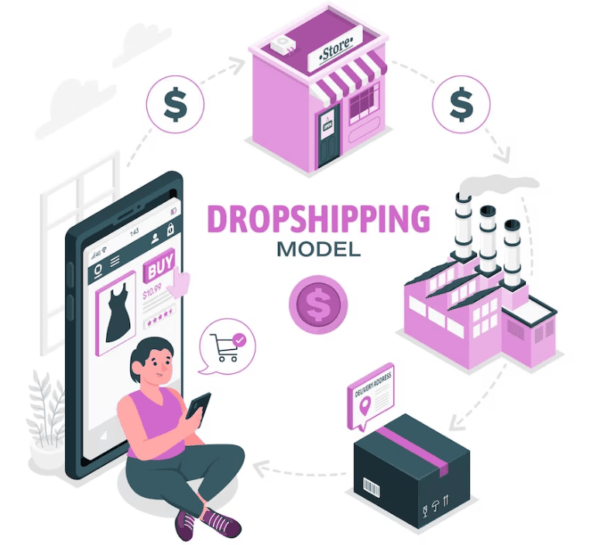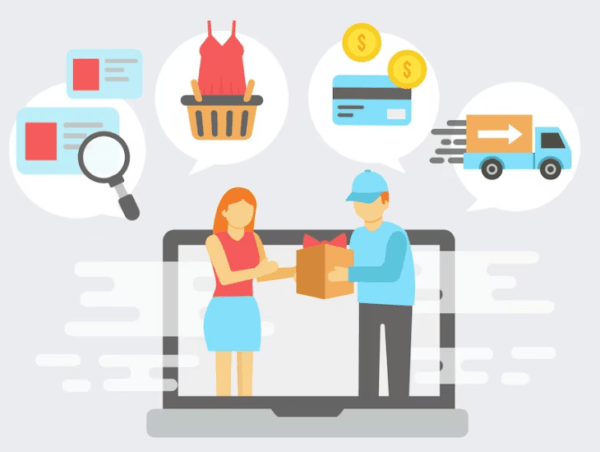Ecommerce Vs Dropshipping: Which Works Best (2023)

As we stride into 2023, the digital revolution continues to transform the world of business, reshaping the way goods and services are bought and sold. One of the key battlegrounds in this revolution is the arena of ecommerce vs dropshipping.
These two models have become increasingly popular, with many entrepreneurs leveraging the power of the internet to start businesses with minimal upfront investment. But the question remains – which model works best?
In this article, I’ll delve into the intricacies of both business models, breaking down the similarities and differences between ecommerce and dropshipping. I’ll offer a clear, research-based analysis to help you understand which model might work best for you.
Whether you’re an established business owner or just starting out, this article aims to provide you with valuable insights that could influence your next business decision. So, are you ready to explore the world of ecommerce vs dropshipping? Let’s get started.
Ecommerce Fulfillment Explained
In the bustling world of ecommerce, think of fulfillment as the backstage crew, tirelessly working to ensure your products reach their eager new owners, from the moment they click ‘Buy’ to the triumphant unboxing.
When contemplating ecommerce vs dropshipping, it’s important to understand how each model handles fulfillment. Ecommerce typically involves an online retailer maintaining inventory, processing orders, and shipping products directly to customers. This hands-on approach gives you control over every aspect of the customer experience, from product quality to delivery times.
The benefits of ecommerce fulfillment:
- You can build a brand
- Establish trust with customers
- Potentially enjoy higher profit margins.
On the other hand, dropshipping is a business model where you, as a retailer, don’t keep goods in stock. Instead, when a customer places an order, it’s forwarded to a third-party supplier, who then ships the product directly to the customer. One of the major dropshipping advantages:
The benefits of Dropshipping:
- It requires less upfront investment compared to traditional ecommerce, as you don’t need to purchase inventory in advance.
- Dropshipping also allows for a broader product offering since you aren’t limited by storage space. However, it also means you have less control over product quality and delivery times.
So, when deciding between ecommerce and dropshipping, it’s crucial to weigh these factors against your business goals and capabilities.
Similarities Between Ecommerce and Dropshipping
As you delve into the world of online retail, you’ll find that both traditional ecommerce and dropshipping share some striking similarities. Both models are based on selling products online, leveraging the power of the internet to reach a global customer base.
Moreover, regardless of the model you choose, your primary role as an online retailer will be to market your products, attract and retain customers, and ensure a smooth buying experience. Both models also allow you to operate your business from anywhere in the world, as long as you have an internet connection.
In the context of product selection, both ecommerce and dropshipping offer you the flexibility to sell a wide range of products. You’re not limited to selling only physical products; digital products can also be sold, expanding your offerings and opportunities.
Additionally, both models can be scaled according to your business needs. Whether you’re looking to start small or have grand ambitions, both ecommerce and dropshipping can accommodate your goals. So, as you can see, both models offer flexibility, scalability, and the potential for success if managed correctly.
What’s The Difference Between Dropshipping vs Ecommerce
While they may seem similar on the surface, there’s quite a contrast when it comes to the operational intricacies of ecommerce and dropshipping.
On one hand, ecommerce demands you to manage inventory, handle shipping, and deal with customer service issues. This means you’re in control of the whole process from start to finish. However, this also requires a substantial initial investment and the risk is high if your products don’t sell as expected.
Conversely, dropshipping allows you to shift these responsibilities to a third-party supplier. You don’t have to worry about inventory and shipping, and you only pay for what you sell. This reduces your risk and initial investment, making it a more accessible option for budding entrepreneurs.
But it’s not all roses with dropshipping, either. You’re essentially at the mercy of your suppliers. If they run out of stock or mess up an order, it’s your reputation on the line. Plus, profit margins are typically thinner due to lower pricing power.
On the flip side, with ecommerce, you have more control over your brand, more room for creativity, and potentially higher profit margins. Ecommerce also allows you to build a stronger relationship with your customers as you’re involved in every aspect of the transaction.
So, while both models have their pros and cons, the best fit depends on your business goals, resources, and risk tolerance.
Choosing Between Ecommerce and Dropshipping
You’re probably feeling overwhelmed and possibly a bit confused about whether to dive head-first into running your own online store or to take the seemingly less risky route of dropshipping.
Let me assure you that you’re not alone in this. Both ecommerce and dropshipping have their own set of advantages and challenges.
Ecommerce allows you to have full control over your inventory and pricing, bolstering your brand’s image. However, it also entails managing stock, shipping, and dealing with returns.
On the flip side, dropshipping frees you from inventory management and shipping concerns. But remember, it may also mean lower profit margins and less control over your products and customer service.
Choosing the right model depends largely on your business goals, resources, and risk tolerance. If you’re starting out and have limited resources, dropshipping might be a good choice. It allows you to test the waters without a huge initial investment.
But if you’re aiming for long-term success and have the resources to handle inventory management, ecommerce could be the way to go. It gives you the opportunity to build a strong brand and foster customer loyalty.
Remember, there’s no one-size-fits-all answer. What works best for one might not work for another. It’s all about finding what suits your individual needs and circumstances.
Business Impact of Dropshipping and Ecommerce
So, let’s dive into how these models (ecommerce vs dropshipping) can impact your business, shall we?
Dropshipping can significantly reduce your overhead costs and risks. You don’t need to maintain a large inventory or worry about unsold stock taking up valuable space. Plus, since you’re not responsible for shipping and handling, your operation can run more smoothly. However, it’s worth noting that dropshipping often means lower profit margins since you’re not purchasing your products wholesale. This model also puts you at the mercy of your suppliers, which can lead to issues with product quality or shipping delays.
On the other hand, ecommerce can offer higher profit margins since you control the sourcing, pricing, and shipping of your products. This control also allows you to ensure product quality and customer service. However, ecommerce involves a more significant investment upfront and ongoing costs for inventory management, shipping, and returns. Plus, if you’re not careful, unsold stock could lead to significant losses. Therefore, you need to have a deep understanding of your market and continuously monitor your inventory levels.
Both models can be profitable, but they require different strategies and levels of involvement. It’s up to you to decide which one fits your goals and capabilities better.
When to Choose Dropshipping Model
If you’re looking for a low-risk way to dip your toes into the world of online retail, dropshipping might just be right up your alley. This model eliminates the need for a hefty initial investment, thanks to its unique structure, where you don’t have to purchase inventory upfront. Instead, you only pay for goods once a customer places an order.
It’s an arrangement that significantly reduces your financial risk and allows you to test new products without worrying about unsold inventory. Plus, since you don’t handle the products directly, you can save on storage and shipping costs too.
Let’s not forget the flexibility it provides. With dropshipping, you can operate your business from anywhere in the world as long as you have access to the internet. This model also gives you the opportunity to offer a wide variety of products without the need for large warehouse space. And the best part? You can focus your time and energy on marketing and customer service rather than on logistics and inventory management.
So, if you’re starting from scratch or if you’re a small business owner looking to expand your offerings without heavy investment, I’d say dropshipping is a model you should consider.
When to Choose Ecommerce Fulfillment Model
Ready to take your online business to the next level and have more control over your inventory? It’s time to consider the ecommerce fulfillment model.
With this model, you’re in charge of your stock, allowing you to manage your inventory effectively and reduce the risk of selling products that are out of stock. This is particularly crucial if you’re dealing with a large volume of orders or high-demand items. Plus, you’ll have more power to negotiate with suppliers for better prices as you’re buying in bulk, which can significantly improve your profitability.
Moreover, the ecommerce fulfillment model gives you a competitive edge in terms of delivery times and customer satisfaction. Since you’re holding your own inventory, you can ship orders immediately after they are placed, resulting in faster delivery times. You also have the opportunity to provide a more personalized customer experience by including thank you notes or small gifts in the packages.
In a market where customers have countless options, this can set you apart and help retain your customers. So if you’re ready for more control and potential growth, the ecommerce fulfillment model is well worth considering.
Pros and Cons of Dropshipping
After we’ve thoroughly discussed the right time to resort to an ecommerce fulfillment model, let’s switch gears a bit and delve into the world of dropshipping. It’s essential to understand that dropshipping isn’t always the most suitable option for every entrepreneur. This business model also has its own set of advantages and disadvantages. Having a comprehensive knowledge of these can help you make an informed decision about whether or not this is the right route for your online business. Now, let’s explore the pros and cons of dropshipping:
The Pros of dropshipping
The most significant advantage is that it requires a relatively low startup cost. You don’t need to invest heavily in inventory upfront, and you only pay for the products you sell. It also offers flexibility as you can operate your business from just about anywhere with an internet connection.
However, it’s not all roses.
The Cons of Dropshipping
The cons include lower profit margins due to competition, potential shipping complications, and less control over product quality or customer service. Also, since you don’t handle the products directly, there could be issues with stock levels that you’re unaware of. This could lead to customer dissatisfaction, which can harm your brand’s reputation.
Therefore, it’s crucial to weigh these pros and cons carefully before diving into dropshipping.
Pros and Cons of Ecommerce Fulfillment
Diving into the world of ecommerce fulfillment, let’s uncover the pros and cons of this popular business model.
The Pros of Ecommerce Fulfillment
One significant advantage is control. Unlike dropshipping, with ecommerce fulfillment, I’m in control of the entire process. I’m in charge of sourcing products, managing inventory, packing, and shipping orders. It’s all in my hands. This allows me to ensure quality at every step, build a stronger brand identity, and even negotiate better deals with suppliers. Plus, I can typically achieve a higher profit margin because I don’t have to share a portion of each sale with a dropshipper.
The Cons of Ecommerce Fulfillment
However, the downside of ecommerce fulfillment is that it’s far more resource-intensive. I need to invest more time, money, and effort to manage all aspects of the process. There are inventory costs to consider, and I may need to rent storage space or even hire staff to help with packing and shipping. There’s also a risk of overstocking or understocking items, which can lead to lost sales or wasted resources.
Despite these challenges, the control and profit potential of ecommerce fulfillment makes it an attractive option for those willing to put in the work.
Getting Started with Dropshipping
So, you’re considering giving dropshipping a go? It’s certainly got its perks, especially if you’re looking to start an online business with minimal upfront costs.
Unlike traditional ecommerce, dropshipping lets you sell products without ever having to stock or handle them yourself. Instead, you partner with a supplier who ships the products directly to your customer. This model allows you to focus on marketing and customer service rather than inventory management. It can be a great way to test the waters of ecommerce without a huge financial risk.
But before you dive into dropshipping, it’s important to do your research. Start by identifying what products you’d like to sell and then find reliable suppliers who offer these items. You’ll want to find dropshipping suppliers who can provide high-quality products, offer fast shipping times, and have good customer service.
Platforms like Alibaba, Doba, or SaleHoo can be a good starting point. It’s also crucial to decide on a pricing strategy that covers your costs and offers a competitive price to your customers. And don’t forget about setting up a user-friendly website that’s optimized for search engines.
With the right plan and dedication, you can start a successful dropshipping business.
Dropshipping vs Ecommerce: Key Takeaways
In my final thoughts, when comparing dropshipping vs ecommerce in 2023, it is clear that both business models have their advantages and disadvantages. Dropshipping offers a low barrier to entry, as it requires minimal upfront investment and allows entrepreneurs to sell a wide range of products without holding inventory.
Additionally, it provides the flexibility to operate from anywhere and eliminates the need for order fulfillment. On the other hand, ecommerce allows for more control over the entire supply chain, enabling businesses to offer faster shipping times and better customer service.
Moreover, ecommerce businesses can build their brand and customer loyalty through personalized experiences. Ultimately, the choice between ecommerce vs dropshipping depends on the individual’s goals, resources, and level of involvement they seek in their business.
Dropshipping vs Ecommerce: The Future
Looking ahead, it is anticipated that both dropshipping and ecommerce will continue to thrive in 2023, albeit with some notable trends. With the advancement of technology and the growing popularity of social media platforms, influencer marketing is expected to play a more significant role in driving sales for both dropshipping and ecommerce businesses.
Additionally, sustainability and ethical practices are becoming increasingly important to consumers, and businesses that prioritize eco-friendly products and practices will likely gain a competitive edge.
Furthermore, the integration of artificial intelligence and machine learning in ecommerce platforms will enhance personalization and improve the overall shopping experience, leading to increased customer satisfaction and loyalty. Overall, as the ecommerce landscape evolves, businesses that stay adaptable and responsive to emerging trends will be best positioned to succeed.
Frequently Asked Questions
What is the difference between dropshipping and ecommerce?
Ecommerce refers to the selling of goods and services online, regardless of the fulfillment method. Dropshipping, a specific model of ecommerce, involves selling products online that you don’t physically stock. Instead, when a customer buys a product from you, the order is sent to a third-party supplier who then ships it directly to the customer. So, the main difference lies in inventory management and order fulfillment process.
What are the current global trends in Ecommerce and Dropshipping for 2023?
In 2023, ecommerce and dropshipping are increasingly focused on personalized customer experiences, mobile commerce, and sustainable practices. These trends are driven by advancements in AI, changing consumer habits, and a shift towards sustainability.
How does the customer service experience differ between Ecommerce and Dropshipping models?
In ecommerce, I handle customer service directly, ensuring quick, personalized responses. In dropshipping, I rely on suppliers for service, which can lead to slower responses and less control over customer satisfaction.
Can both Ecommerce and Dropshipping models be incorporated within a single business?
Absolutely, a single business can successfully incorporate both ecommerce and dropshipping models. It’s all about marrying the scalability of dropshipping with the control of ecommerce to create a powerful, flexible online retail strategy.
How does the return and refund process differ in Ecommerce and Dropshipping?
In ecommerce, I manage returns and refunds directly. But in dropshipping, it’s different. I’d coordinate with my supplier to handle returns, sometimes making the process longer and more complex for my customers.
Some successful brands utilizing ecommerce include Amazon and eBay. On the other hand, Wayfair and Zappos have effectively employed the dropshipping model. These companies demonstrate the potential profitability of both models when used effectively.









